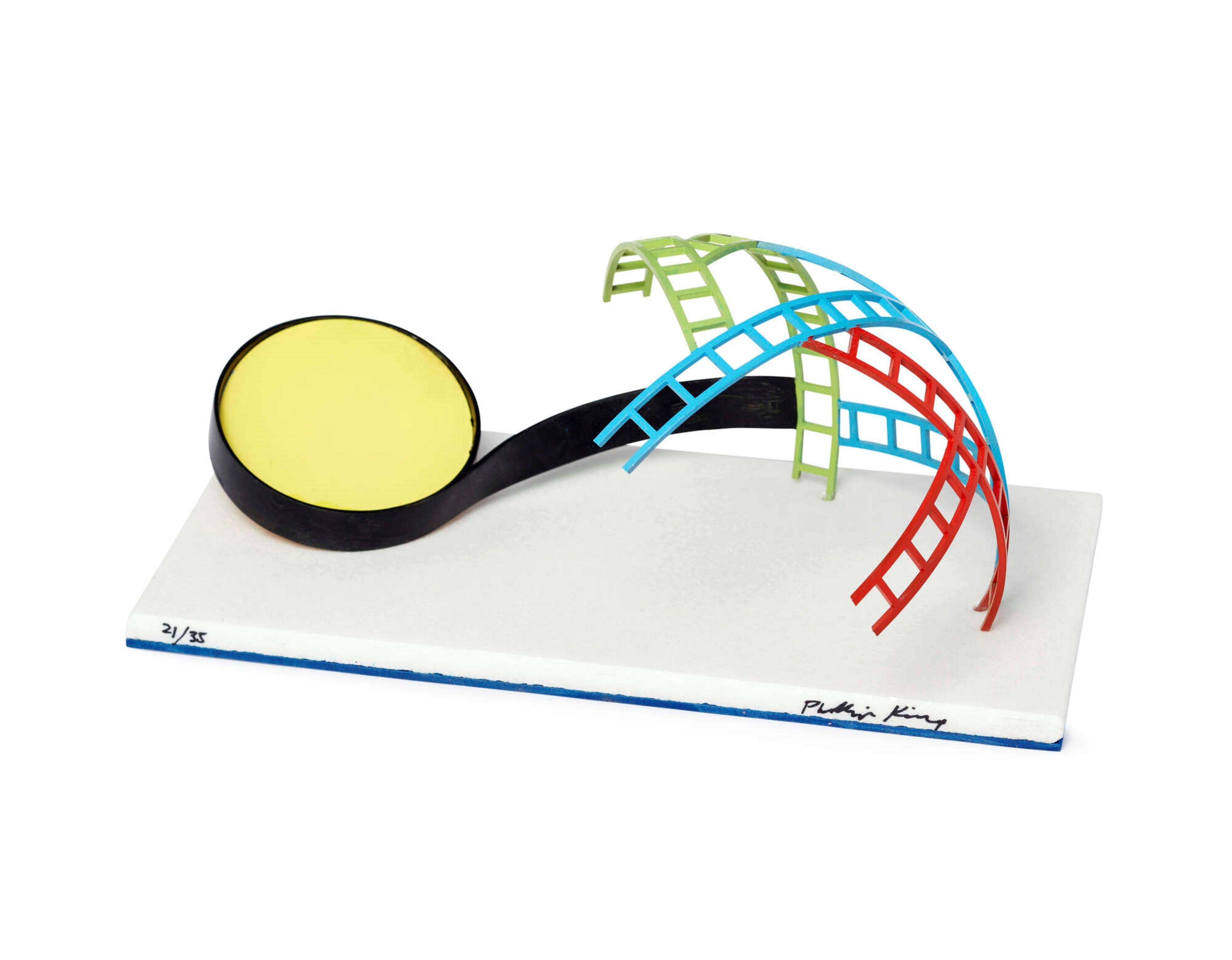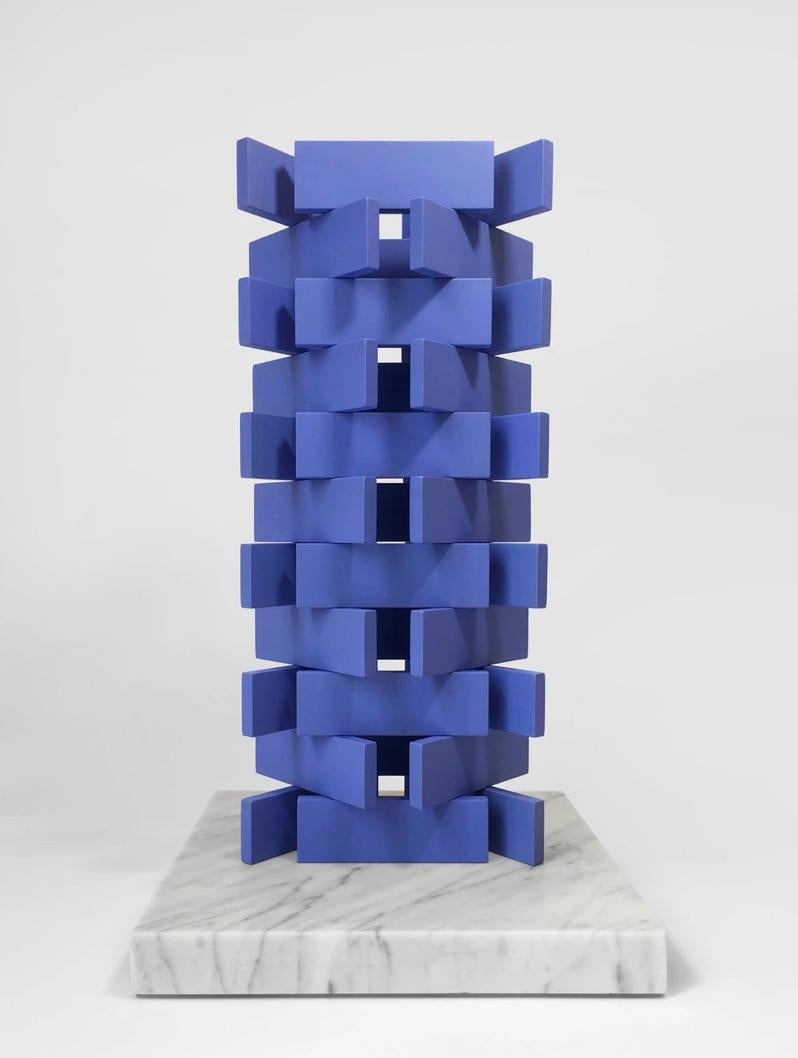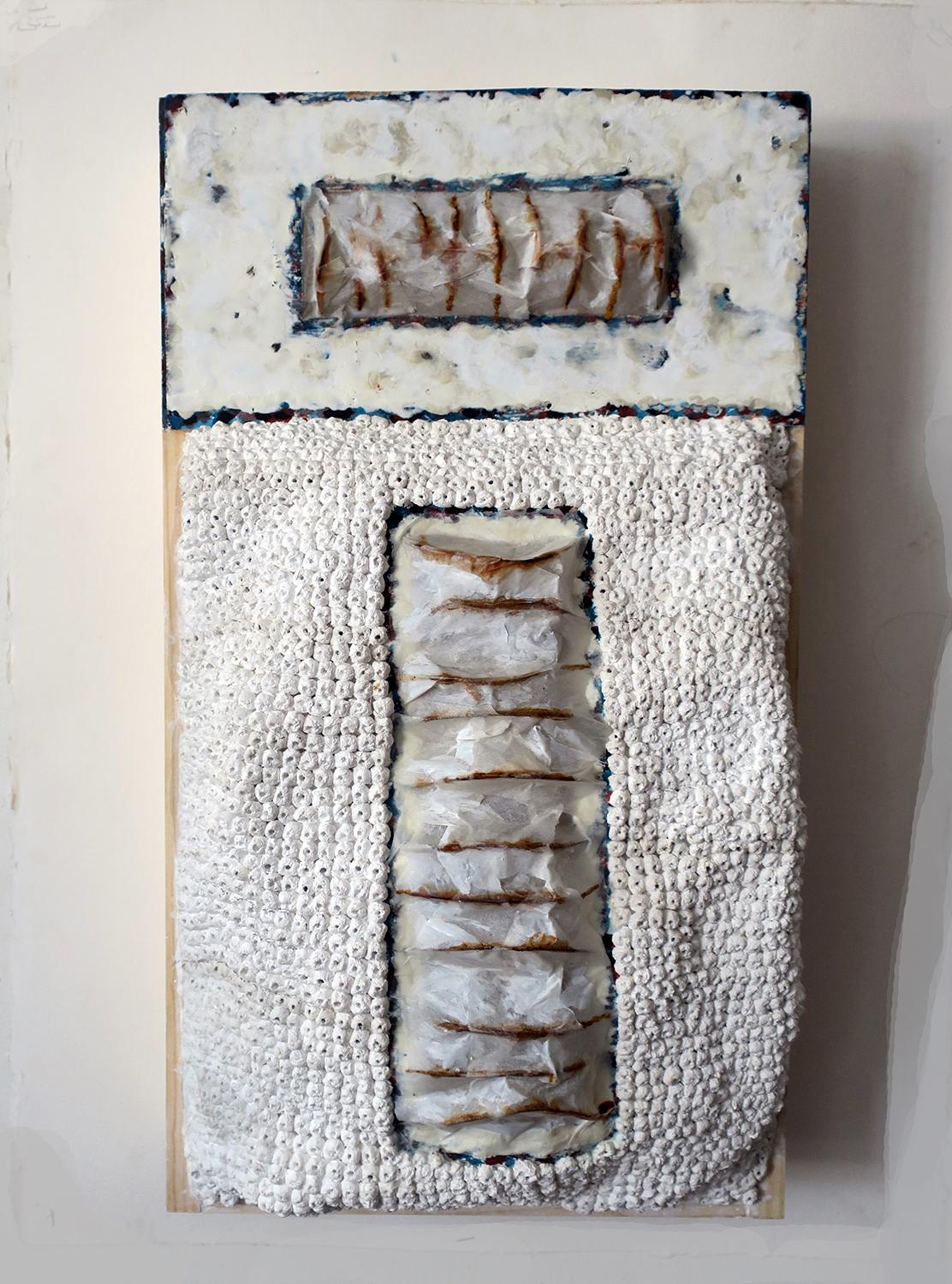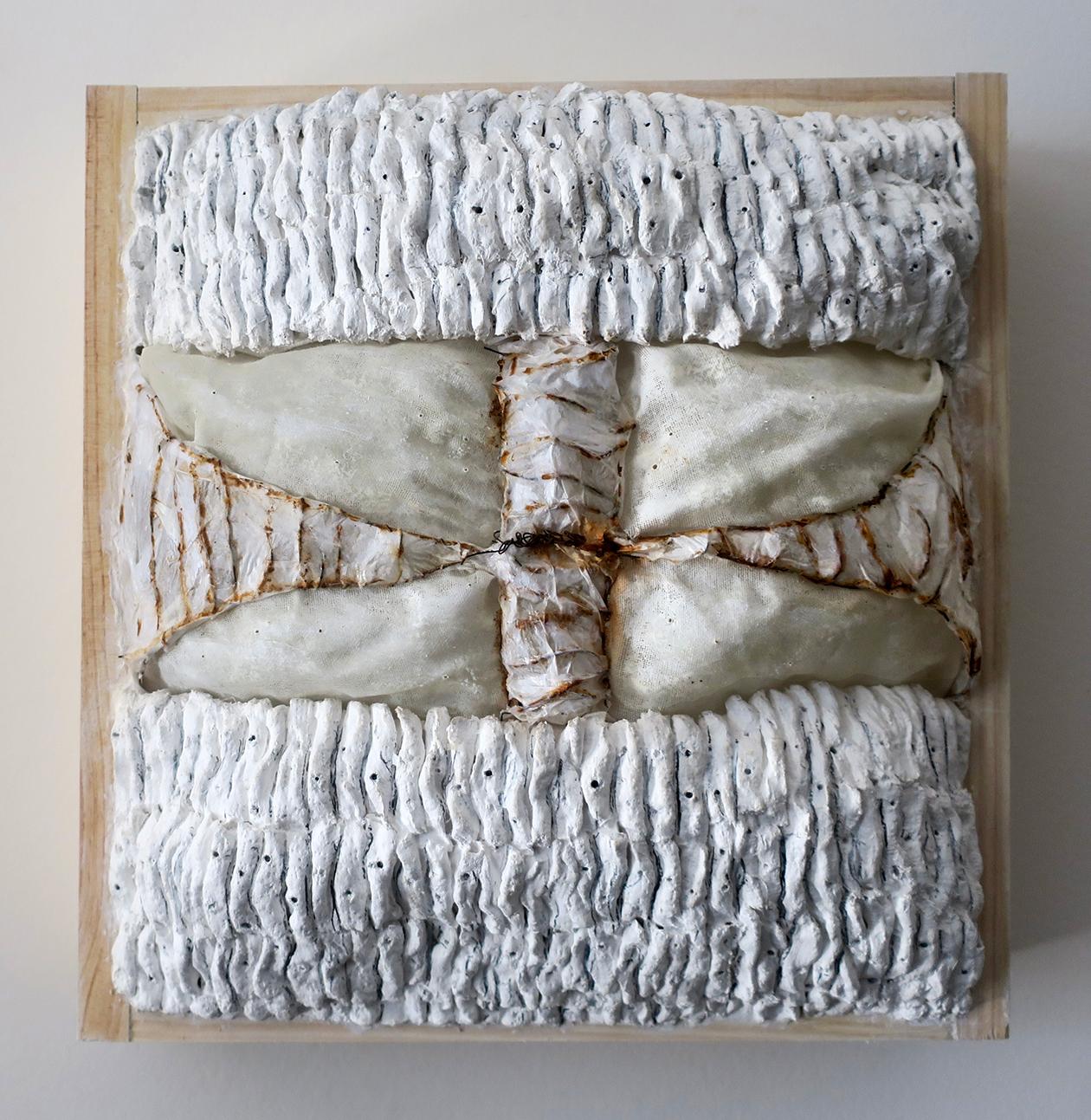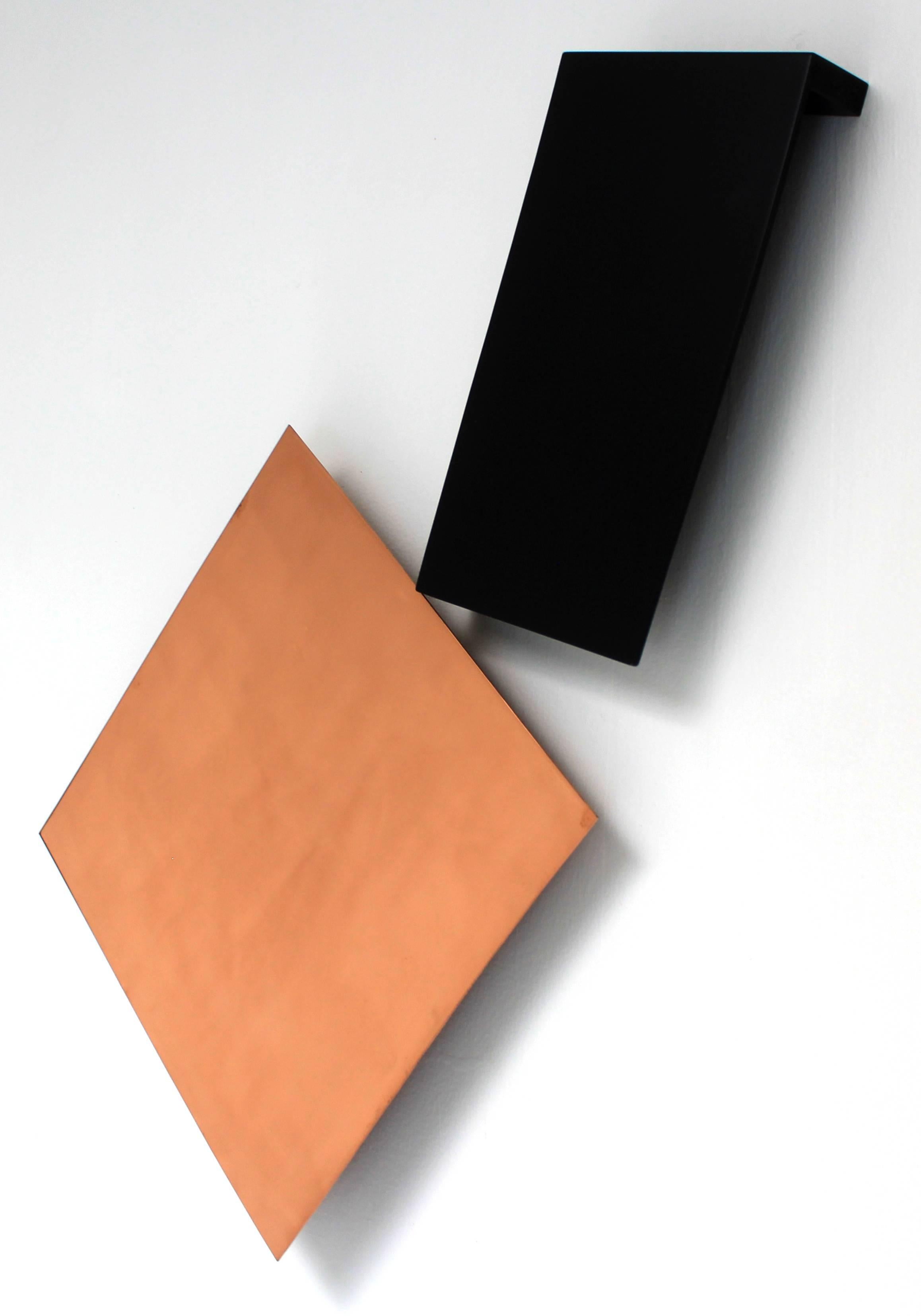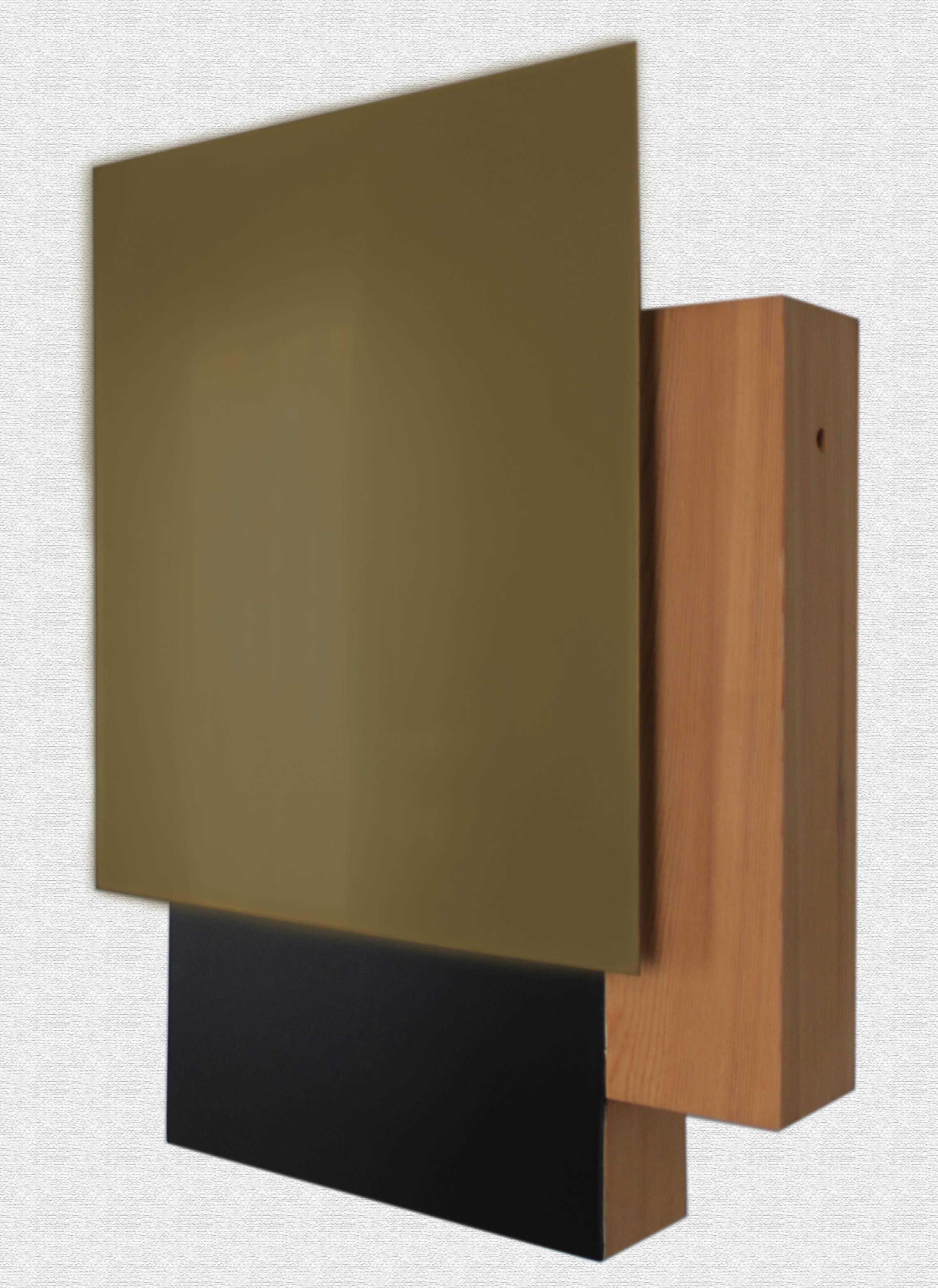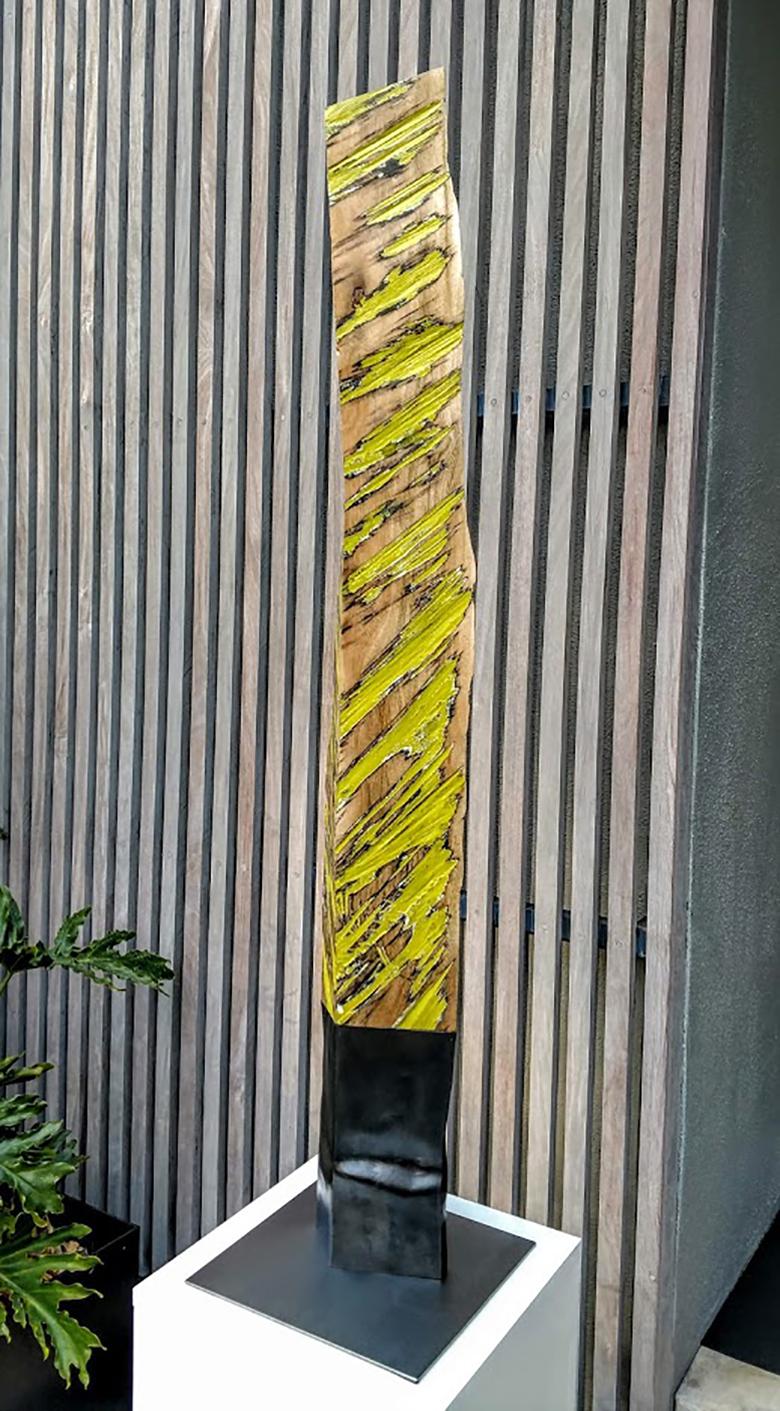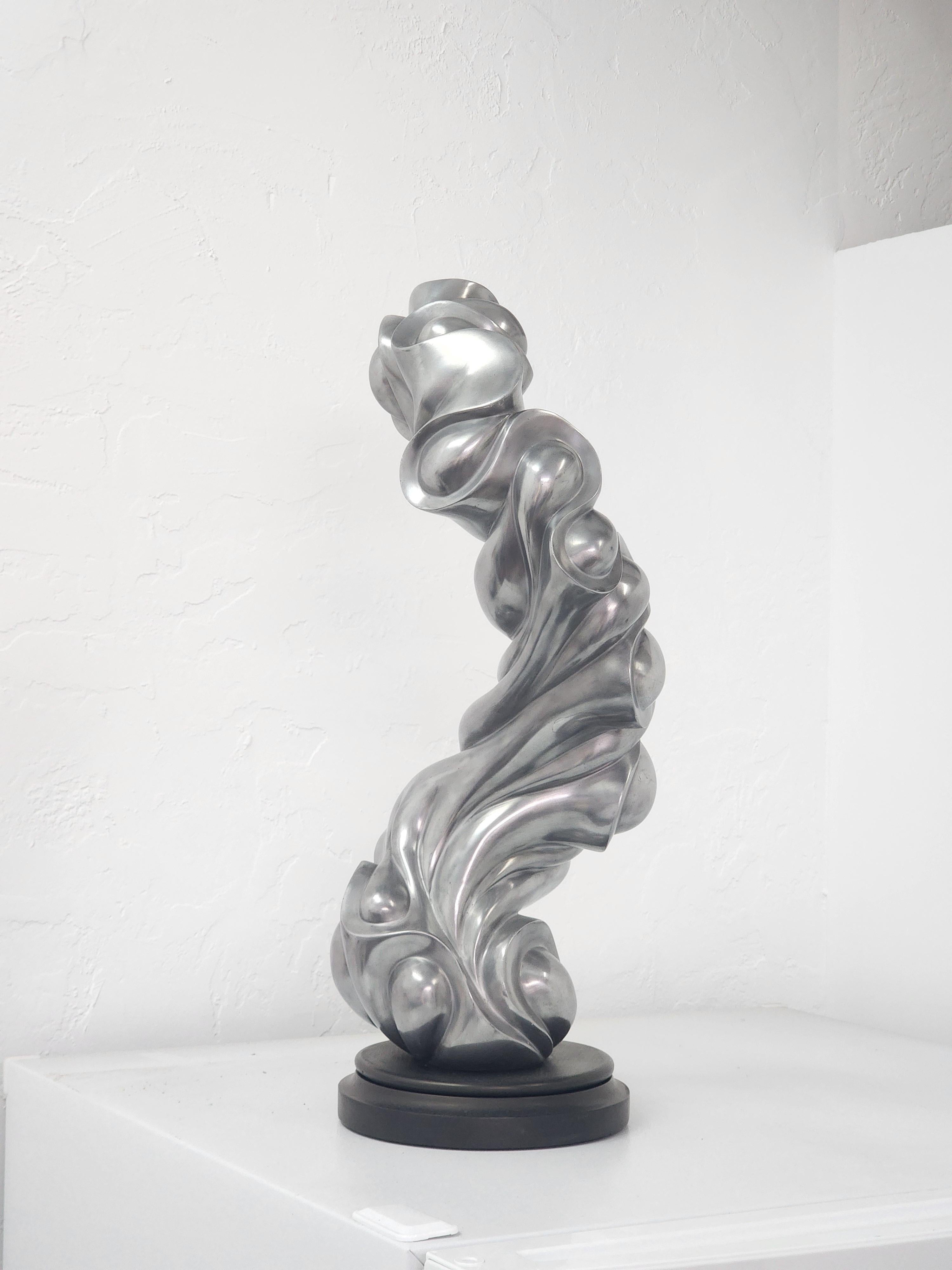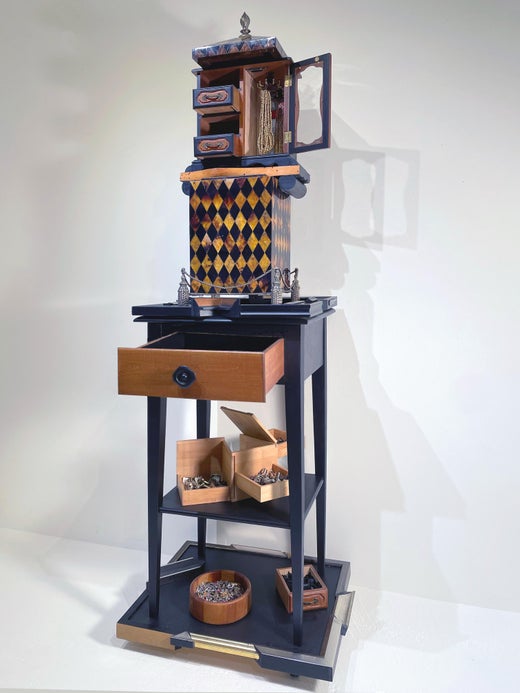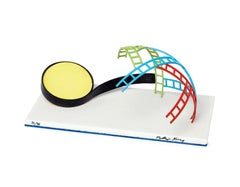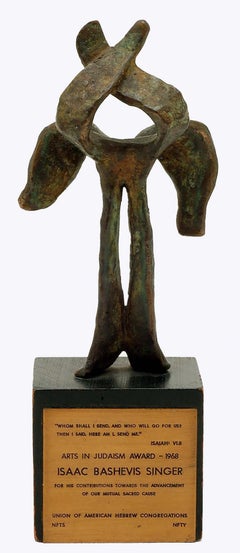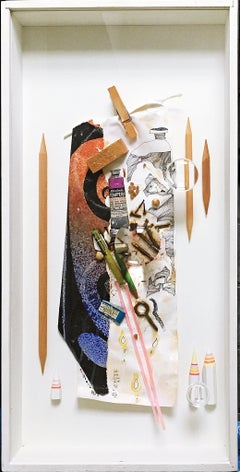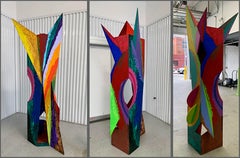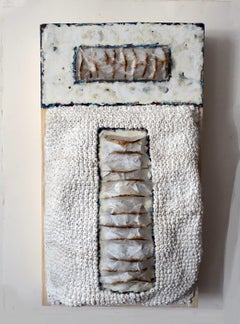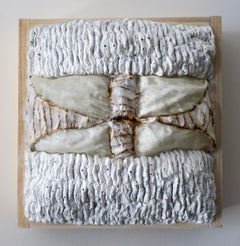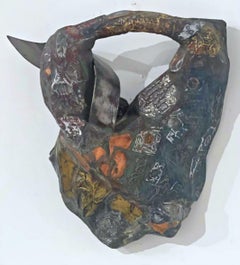
Soft Curve 312, Signed unique sculpture (from the Estate of artist Will Barnet)
View Similar Items
Want more images or videos?
Request additional images or videos from the seller
1 of 10
Linda SteinSoft Curve 312, Signed unique sculpture (from the Estate of artist Will Barnet)1998
1998
$2,800List Price
About the Item
- Creator:Linda Stein (1943, American)
- Creation Year:1998
- Dimensions:Height: 19 in (48.26 cm)Width: 18 in (45.72 cm)Depth: 4 in (10.16 cm)
- Medium:
- Movement & Style:
- Period:
- Condition:Fine original condition.
- Gallery Location:New York, NY
- Reference Number:1stDibs: LU1745215233182
Throughout her artistic career, Linda Stein's work has addressed issues of persecution and protection, focusing on oppression of the “other” through the lens of anti-bullying and social justice. As result of running for an entire day from the falling Twin Towers in the Ground Zero area of Manhattan, her previously-abstract work after 9/11 became figurative, armor-like, and she realized that she was creating visual and visceral symbols of protection, androgynous sentinel-like figures to stand guard against the foe. Her work often incorporates a family of pop-culture and religious icons like Wonder Woman, Princess Mononoke, Lisbeth Salander, Lady Gaga, Storm and Nausicaa, that start conversations about issues of power and vulnerability. Her works are in more than 25 museum permanent collections, including Crystal Bridges Museum of American Art, Georgia Museum of Art, and Ringling Museum of Art in the US; Victoria Gallery & Museum and Manchester Art Gallery in the UK; Konstmuseet i Skövde in Sweden; and Espoo Museum of Modern Art in Sweden. More can be viewed on her website: https://www.lindastein.com/series
About the Seller
5.0
Platinum Seller
Premium sellers with a 4.7+ rating and 24-hour response times
Established in 2007
1stDibs seller since 2022
446 sales on 1stDibs
Typical response time: 2 hours
Authenticity Guarantee
In the unlikely event there’s an issue with an item’s authenticity, contact us within 1 year for a full refund. DetailsMoney-Back Guarantee
If your item is not as described, is damaged in transit, or does not arrive, contact us within 7 days for a full refund. Details24-Hour Cancellation
You have a 24-hour grace period in which to reconsider your purchase, with no questions asked.Vetted Professional Sellers
Our world-class sellers must adhere to strict standards for service and quality, maintaining the integrity of our listings.Price-Match Guarantee
If you find that a seller listed the same item for a lower price elsewhere, we’ll match it.Trusted Global Delivery
Our best-in-class carrier network provides specialized shipping options worldwide, including custom delivery.More From This Seller
View AllYellow Disc Hand painted steel sculpture on marble base Signed 21/35 British Art
By Phillip King
Located in New York, NY
Phillip King
Yellow Disc, 2007
Hand painted steel on a marble base
Signed and numbered 21/35 on base.
Provenance: Bernard Jacobson Gallery, London
Private Collection, UK
5 3/5 × 12 ...
Category
Early 2000s Abstract Abstract Sculptures
Materials
Marble, Steel
Bronze Sculpture to Isaac Bashevis Singer, Arts in Judaism Award signed Judaica
By Nathaniel Kaz
Located in New York, NY
Nathaniel Kaz
Bronze Sculpture to Isaac Bashevis Singer for Arts in Judaism Award, 1966
Bronze, Square wooden base, Metal tag
Signed and dated "66" to back of bronze portion of the w...
Category
1960s Abstract Expressionist Abstract Sculptures
Materials
Metal, Bronze
Mary Bauermeister, Studio Leftover Fetich, 3D mixed media sculpture Fluxus, S/N
By Mary Bauermeister
Located in New York, NY
Mary Baumeister
Studio Leftover Fetich, 1953, 1967
Unique Mixed Media 3-D Assemblage
Ink Signed, dated, titled, annotated "Edition Original" and numbered 52/75.
Shadow box frame Incl...
Category
1960s Abstract Mixed Media
Materials
Mixed Media, Wood, Found Objects, Ink, Acrylic
STOI V, unique dazzling large indoor painted wood sculpture by important artist
By Alexander Liberman
Located in New York, NY
Alexander Liberman
STOI V, 1986
Wood with paper and paint
97 1/2 × 28 × 37 inches
This work is hand signed twice by Alexander Liberman:
Signed on the side as well as the underside an...
Category
1980s Abstract Expressionist Abstract Sculptures
Materials
Wood, Oil, Laid Paper, Mixed Media
Maquette for Laureate (unique sculpture)
By Seymour Lipton
Located in New York, NY
Seymour Lipton
Maquette for Laureate, ca. 1968-1969
Nickel silver on monel metal
Unique
18 × 8 1/2 × 7 inches
Marlborough-Gerson Gallery, New York
Acquired from the above by the previous owner, 1969
thence by descent
Christie's New York: Monday, June 30, 2008 [Lot 00199]
Acquired from the above Christie's sale This unique sculpture by important Abstract Expressionist sculptor Seymour Lipton is a maquette of the monumental sculpture "Laureate" - one of Lipton's most iconic and influential works located on the Riverwalk in downtown Milwaukee, Wisconsin. Laureate is a masterpiece that was commissioned by the Allen-Bradley Company in memory of Harry Lynde Bradley and as an enhancement for the newly constructed Performing Arts Center. It is located on the east bank of the Milwaukee River at 929 North Water Street. The Bradley family in Milwaukee were renowned patrons of modernist sculpture, known for their excellent taste who also founded an eponymous sculpture park. For reference only is an image of the monumental "Laureate" one of Milwaukee's most beloved public sculptures. According to the Smithsonian, which owns a different unique variation of this work, "The full-size sculpture Laureate was commissioned by the Marcus Center for the Performing Arts in Milwaukee. In the initial drawings, Seymour Lipton combined details from the architectural plan with a wide variety of images, ranging from musical instruments to a lighthouse on the island of Tobago. He transformed the basic shapes from these sketches into a welded sculpture, which evokes a figure composed of columns, harp strings, and coiled rope. Lipton created this piece to celebrate achievement in the arts. The dramatic silhouette commands your attention, reflecting the title Laureate, which means worthy of honor and distinction. The final version of the piece is over twelve feet high and stands out against the pale, flat buildings of the arts center.,,"
Provenance
Marlborough-Gerson Gallery, New York
Acquired from the above by the previous owner, 1969
thence by descent
Christie's New York: Monday, June 30, 2008 [Lot 00199]
Acquired from the above Christie's sale
About Seymour Lipton:
Born in New York City in 1903, Seymour Lipton (1903-1986) grew up in a Bronx tenement at a time when much of the borough was still farmland. These rural surroundings enabled Lipton to explore the botanical and animal forms that would later become sources for his work. Lipton’s interest in the dialogue between artistic creation and natural phenomena was nurtured by a supportive family and cultivated through numerous visits to New York’s Museum of Natural History as well as its many botanical gardens and its zoos. In the early 1920s, with the encouragement of his family, Lipton studied electrical engineering at Brooklyn Polytechnic Institute and pursued a liberal arts education at City College. Ultimately, like fellow sculptor Herbert Ferber, Lipton became a dentist, receiving his degree from Columbia University in 1927. In the late 1920s, he began to explore sculpture, creating clay portraits of family members and friends.
In addition to providing him with financial security, dentistry gave Lipton a foundation in working with metal, a material he would later use in his artwork. In the early 1930s, though, Lipton’s primary sculptural medium was wood. Lipton led a comfortable life, but he was also aware of the economic and psychological devastation the Depression had caused New York. In response, he generally worked using direct carving techniques—a form of sculpting where the artist “finds” the sculpture within the wood in the process of carving it and without the use of models and maquettes. The immediacy of this practice enabled Lipton to create a rich, emotional and visual language with which to articulate the desperation of the downtrodden and the unwavering strength of the disenfranchised. In 1935, he exhibited one such early sculpture at the John Reed Club Gallery in New York, and three years later, ACA Gallery mounted Lipton’s first solo show, which featured these social-realist-inspired wooden works. In 1940, this largely self-taught artist began teaching sculpture at the New School for Social Research, a position he held until 1965.
In the 1940s, Lipton began to devote an increasing amount of time to his art, deviating from wood and working with brass, lead, and bronze. Choosing these metals for their visual simplicity, which he believed exemplified the universal heroism of the “everyman,” Lipton could also now explore various forms of abstraction. Lipton’s turn towards increasing abstraction in the 1940s allowed him to fully develop his metaphorical style, which in turn gave him a stronger lexicon for representing the horrors of World War II and questioning the ambiguities of human experience. He began his metal work with cast bronze sculptures, but, in 1946, he started welding sheet metal and lead. Lipton preferred welding because, as direct carving did with wood, this approach allowed “a more direct contact with the metal.”[ii] From this, Lipton developed the technique he would use for the remainder of his career: “He cut sheet metal, manipulated it to the desired shapes, then joined, soldered, or welded the pieces together. Next, he brazed a metal coating to the outside to produce a uniform texture.”[iii]
In 1950, Lipton arrived at his mature style of brazing on Monel metal. He also began to draw extensively, exploring the automatism that abstract expressionist painters were boasting at the time. Like contemporaries such as Jackson Pollock, Lipton was strongly influenced by Carl Jung’s work on the unconscious mind and the regenerative forces of nature. He translated these two-dimensional drawings into three-dimensional maquettes that enabled him to revise his ideas before creating the final sculpture.The forms that Lipton produced during this period were often zoomorphic, exemplifying the tension between the souls of nature and the automatism of the machine.
In the years following the 1950s, Lipton’s optimism began to rise, and the size of his work grew in proportion. The oxyacetylene torch—invented during the Second World War—allowed him to rework the surfaces of metal sculptures, thus eliminating some of the risks involved with producing large-scale finished works. In 1958, Lipton was awarded a solo exhibition at the Venice Biennale and was thus internationally recognized as part of a small group of highly regarded avant-garde constructivist sculptors. In 1960, he received a prestigious Guggenheim Award, which was followed by several prominent public commissions, including his heroic Archangel, currently residing in Lincoln Center’s David Geffen Hall.
A number of important solo exhibitions of his work followed at The Phillips Collection in Washington, DC (1964); the Milwaukee Art Center and University of Wisconsin, Milwaukee (1969); the Virginia Museum of Fine Arts in Richmond (1972); the Everson Museum in Syracuse, NY (1973); the Herbert E. Johnson Museum of Art of Cornell University in Ithaca, NY (1973); the National Collection of Fine Arts, Smithsonian Institution (now the Smithsonian American Art Museum) in Washington, DC (1978); and a retrospective in 1979 at The Jewish Museum in New York. In 1982 and 1984 alone, two exhibitions of his sculpture, organized respectively by the Mint Museum (Charlotte, NC) and the Hillwood Art Gallery of Long Island University (Greenvale, NY), traveled extensively across museums and university galleries around the nation. In 2000, the traveling exhibition An American Sculptor: Seymour Lipton was first presented by the Palmer Museum of Art of Pennsylvania State University in University Park. Most recently, in 2009, the Ackland Art Museum in Chapel Hill, NC mounted The Guardian and the Avant-Garde: Seymour Lipton’s Sentinel II in Context.
Since 2004, Michael Rosenfeld Gallery has been the exclusive representative of the Estate of Seymour Lipton and has presented two solo exhibitions of his work—Seymour Lipton: Abstract Expressionist Sculptor (2005) and Seymour Lipton: Metal (2008). In 2013, Michael Rosenfeld Gallery presented Abstract Expressionism, In Context: Seymour Lipton, which included twelve major sculptures by the artist, along with works by Charles Alston, Norman Bluhm, Beauford Delaney, Willem de Kooning, Jay DeFeo, Michael Goldberg, Adolph Gottlieb, Hans Hofmann, Lee Krasner, Norman Lewis, Conrad Marca-Relli, Boris Margo, Alfonso Ossorio, Richard Pousette-Dart, Milton Resnick, Charles Seliger...
Category
1960s Abstract Expressionist Abstract Sculptures
Materials
Metal, Silver
Holocaust Remembrance Logo Pin enamel Pendant in bespoke box incised artist name
By Judy Chicago
Located in New York, NY
Judy Chicago
Logo Pin and Pendant, 1993
Enameled pin with pendant loop in original presentation box
2 1/2 × 2 1/2 × 1/5 inches
Judy Chicago's incised name and date on the verso
Comes...
Category
1990s Abstract Geometric More Art
Materials
Metal, Enamel
You May Also Like
Angles, Contemporary Art, Abstract Sculpture, 21st Century
Located in Mexico City, MX
ANGLES purple (2024)
MATERIAL
Painted Aluminum / Marble
DIMENSIONS
32 x 18 x 18 cm
Signed
About the Artist
José Luis Meyer (1981) is a contemporary sculptor. He has a masters degree in industrial design from TU-München in Germany and a background in mechanical engineering...
Category
2010s Abstract Abstract Sculptures
Materials
Marble
Neolithic Site Plan mixed media on wood metal wall sculpture
By Thomas Anderson
Located in Palm Desert, CA
I am usually not thinking so much about a finished work, but am inspired, accepting and mystified by the process of creating it. I see each of my works as a rehearsal in enduring un...
Category
21st Century and Contemporary Abstract Mixed Media
Materials
Metal
$4,500 Sale Price
35% Off
Wall Sculpture: "Amalgam"
By Megan Klim
Located in New York, NY
Megan Klim's mixed media work juxtaposes several materials on one picture plane. She highlights their inherent qualities to create surface tension which sparks a conversation and in...
Category
2010s Abstract Abstract Sculptures
Materials
Wire
Wall Sculpture: "Amalgam #4"
By Megan Klim
Located in New York, NY
Megan Klim's mixed media work juxtaposes several materials on one picture plane. She highlights their inherent qualities to create surface tension which sparks a conversation and in...
Category
2010s Abstract Abstract Sculptures
Materials
Wire
Aman
By Rosa Brun
Located in Mexico City, CDMX
Joseph Kosuth, father of conceptual art, once famously said: “Works of art that try to tell us something about the world are bound to fail (…)The absence of reality in art is exactly...
Category
2010s Abstract Geometric Abstract Sculptures
Materials
Copper
$10,500
Oro
By Rosa Brun
Located in Mexico City, CDMX
Joseph Kosuth, father of conceptual art, once famously said: “Works of art that try to tell us something about the world are bound to fail (…)The absence of reality in art is exactly...
Category
2010s Abstract Geometric Abstract Sculptures
Materials
Brass
$5,200
Recently Viewed
View AllMore Ways To Browse
Soft Sculpture
Vintage Metal Sculptures Signed
Curved Wood Sculpture
Wood Outdoor Sculptures
Female Stone Sculpture
Bronze Torso
Outdoor Stone Sculpture
Bronze Sculptures 1990s
Metal Torso
Wood Torso Sculpture
Outdoor Curved Sculpture
Large Torso Sculptures
Stone Sculpture Torso
Wood 1990s Sofa
Metal Knights Vintage
Wood Female Torso
Jeremy Lepisto
Jill Kovachick
